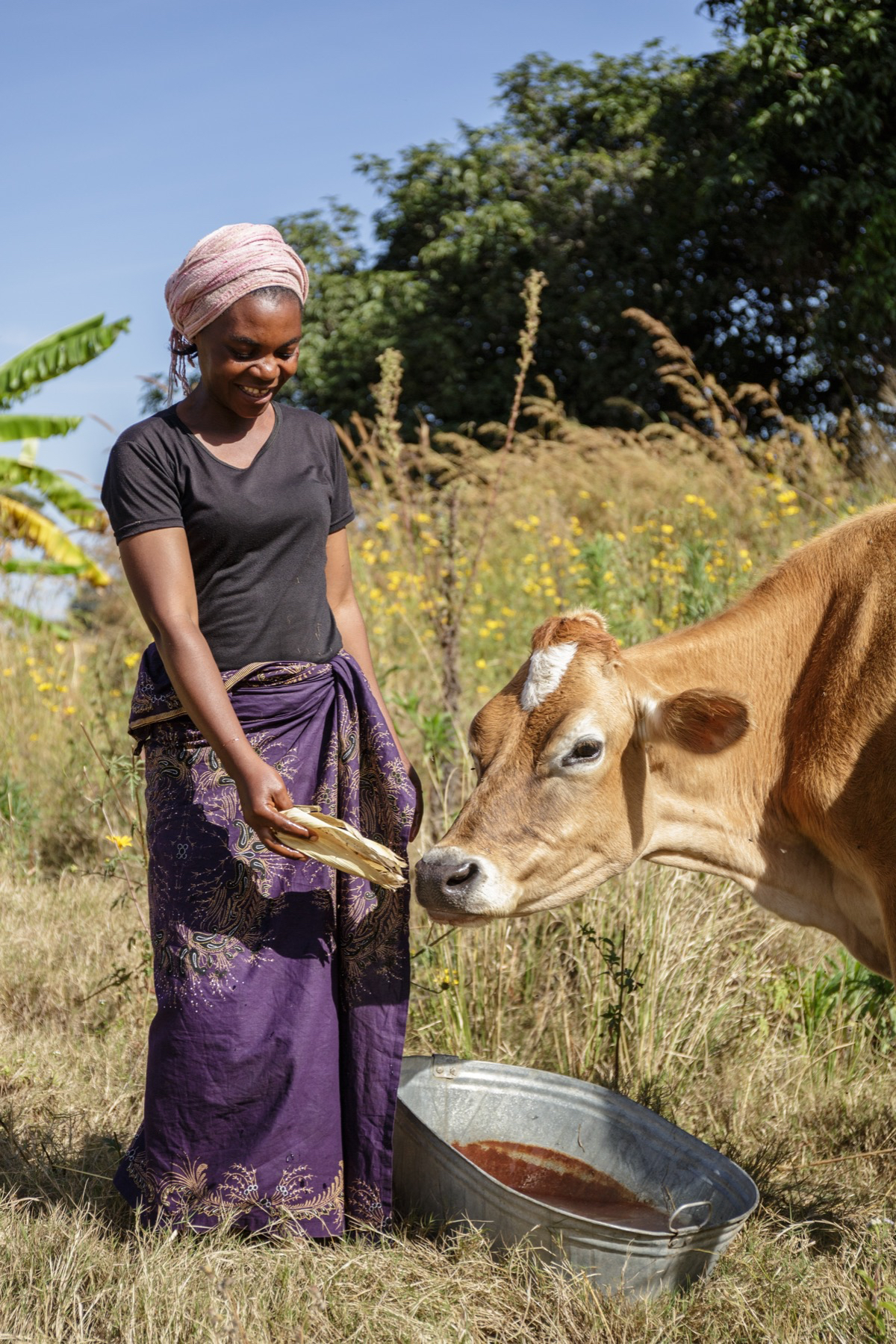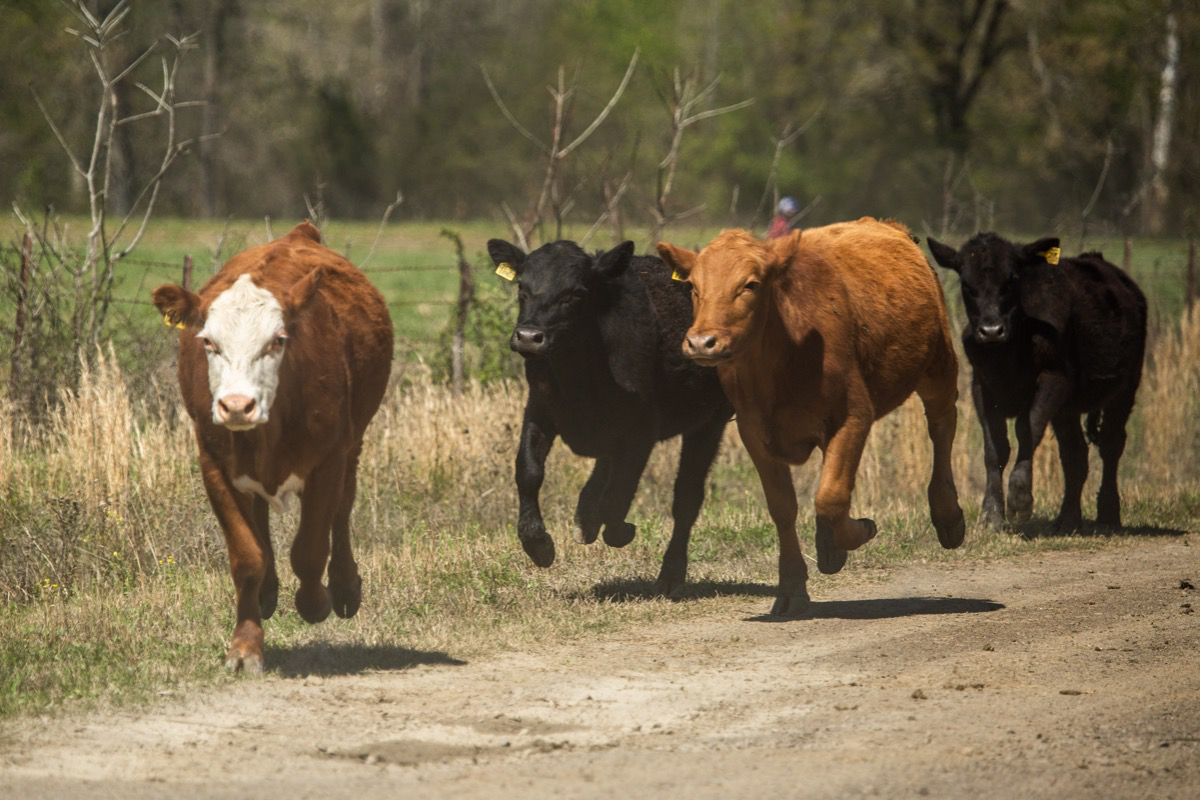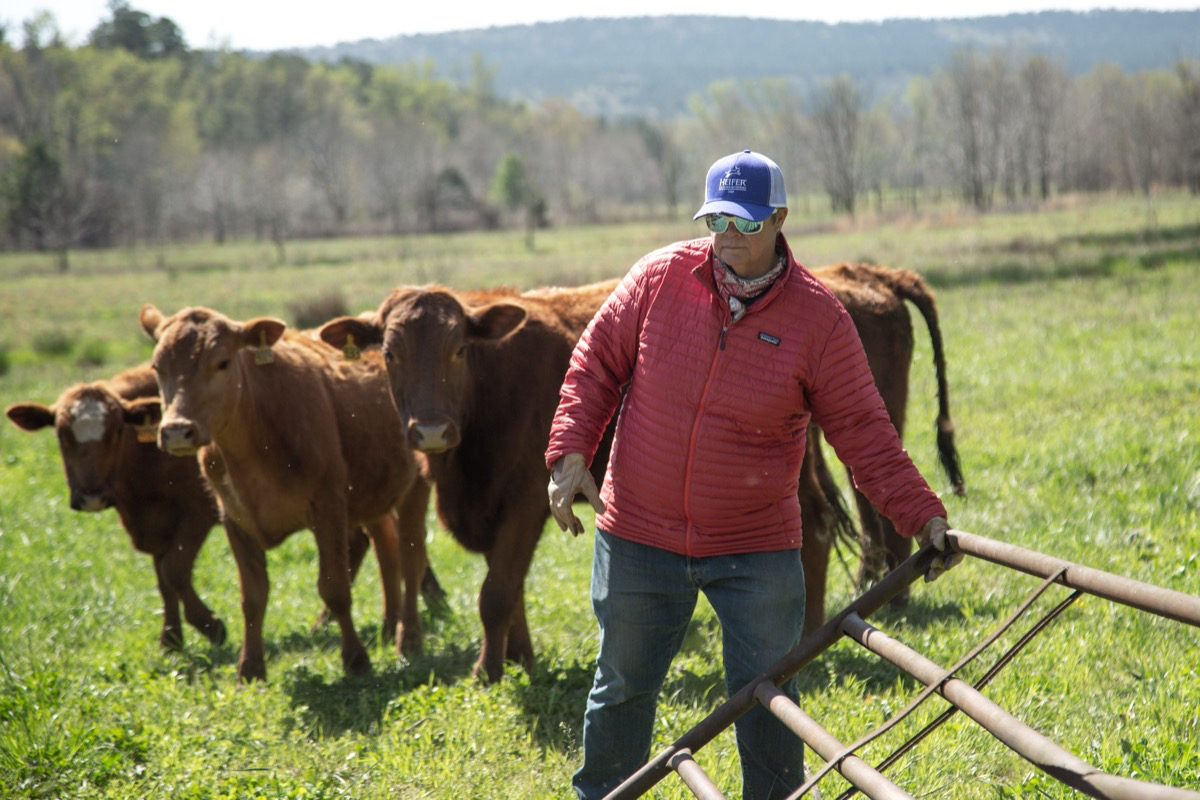
What is Regenerative Agriculture?
By Heifer International | October 9, 2025
Humans and cows have co-existed for eons. Some of the earliest cave paintings, etched onto rock walls in a Borneo jungle, date back over 40,000 years — and resemble that of a cattle-like beast.
In the years since, our move from hunter-gatherers to self-sustaining communities has been inextricably linked with domesticated livestock.

And for good reason: Prized for their nutritious milk and meat, cows are a lifeline out of poverty for many of the 500 million smallholder farmers across the globe. But they’re also key to regenerating the land.
“In the past, some people used to think large groups of herbivores moving through a landscape was decimating the plant life or causing destruction,” said Donna Kilpatrick, ranch manager and land steward of Heifer Ranch. “Now, it’s been proven that large herds are critical to the soil and the land’s health.”
The team at Heifer Ranch, a 1,200-acre expanse of farmland in Perryville, Arkansas, practices regenerative agriculture, a method of farming that places a premium on soil health, plant diversity and raising livestock in harmony with the ecosystem. It’s a mode of agriculture that works with the land instead of against it.
And cows, when managed responsibly, play a critical role in maintaining this mutually beneficial relationship. But how exactly do they help the land?

Where there are animals, there is waste. But cow manure is a resource of vast value; its fiber can be used for building materials or seed starter pots, its energy used for biogas, and its nutrients serve as an excellent fertilizer.
Using livestock manure as fertilizer is a win-win for many of the farmers Heifer supports, reducing waste and the risk of polluting local water sources as well as accessing a readily available, inexpensive and effective tool for crop production. Rich in nitrogen and phosphorus, manure is vital to healthy plant growth.

A key tenant of regenerative agriculture is biodiversity: the greater variety of plants, the better. When a landscape is populated by diverse species of plants, soil is less exposed and sturdier, held together by a robust network of roots which in turn minimizes erosion.
In these contexts, cows play an important role in shaping the ecosystem — as unwitting seed transporters. Many grass seeds have adapted to stick to a passing animal’s hide, or to be consumed, softened in the digestive tract and deposited elsewhere for germination.

Cows are large creatures, and roves of lumbering cattle leave heavy-hoofed impressions on the land they occupy. But breaking up soil is far from harmful; in fact, it benefits the land.
This natural process of mulching the soil surface primes the land to capture more rainfall, creating favorable conditions for newly deposited seeds to take root and flourish. Cows also trample vegetation into thatch, a tightly intermingled layer of living and dead stems, leaves and roots, which covers and protects the soil from erosion or run-off.

In grasslands and deserts, short-term, high intensity grazing events followed by periods of rest encourages vegetative regrowth. In this way, grazing cattle mimic the herds of buffalo that once roamed United States grasslands in large numbers.
“Whether it’s grazing or pushing seeds from hoof action [or] the massaging of the soil, all these things are actually imperative to healthy ecosystems, as long as the plants are able to recover,” said Donna, who deploys this rotational technique known as holistic planned grazing with the Ranch’s herd.
As many in the regenerative agriculture community put it, “It’s not the cow but how.” Considered and ecologically responsible approaches to raising livestock, like the work at Heifer Ranch, can be an asset to plant life, soil health and farmers alike.
Cart is empty
Success!
Please be patient while we send you to a confirmation page.
We are unable to process your request. Please try again, or view common solutions on our help page. You can also contact our Donor Services team at 855.9HUNGER (855.948.6437).
Covering the transaction fee helps offset processing and administrative fees that we incur through taking payments online. Covering the transaction fee for each payment helps offset processing and administrative fees that we incur through taking payments online. Covering the transaction fee for each payment helps offset processing and administrative fees that we incur through taking payments online.
Success!
Please be patient while we send you to a confirmation page.
We are unable to process your request. Please try again, or view common solutions on our help page. You can also contact our Donor Services team at 855.9HUNGER (855.948.6437).
When you donate a gift to someone, you'll have the option to create a free card after your donation is complete.

A FREE gift will be sent to supporters who choose to give a monthly gift.
Covering the transaction fee helps offset processing and administrative fees that we incur through taking payments online. Covering the transaction fee for each payment helps offset processing and administrative fees that we incur through taking payments online. Covering the transaction fee for each payment helps offset processing and administrative fees that we incur through taking payments online.

A FREE gift will be sent to supporters who choose to give a monthly gift.